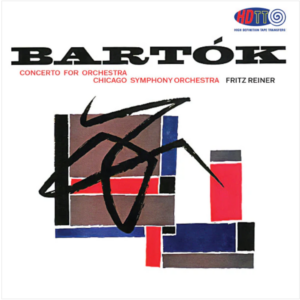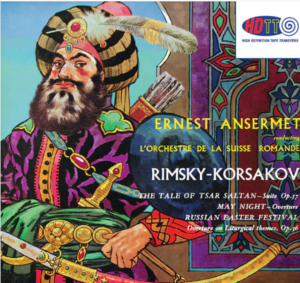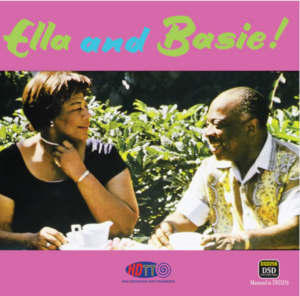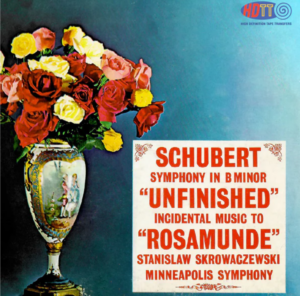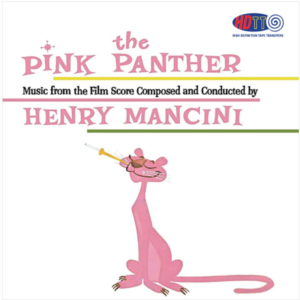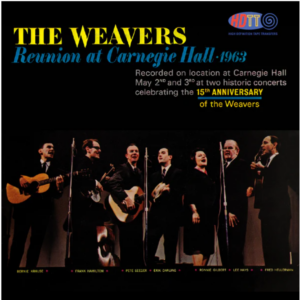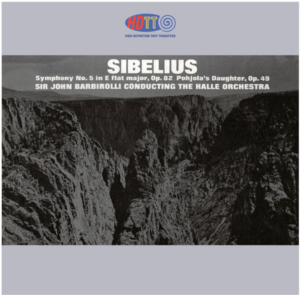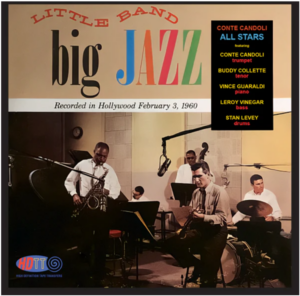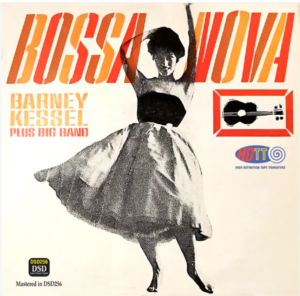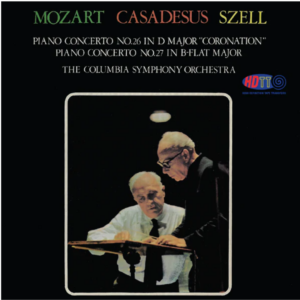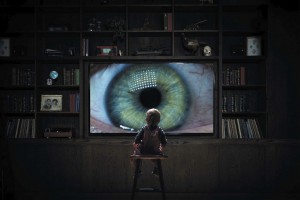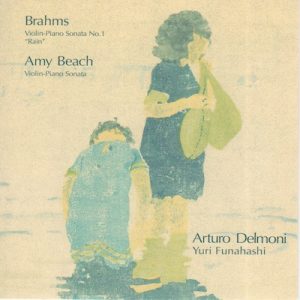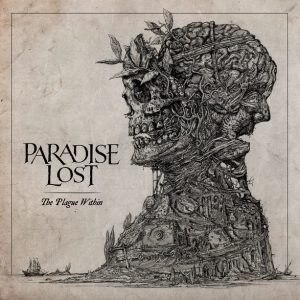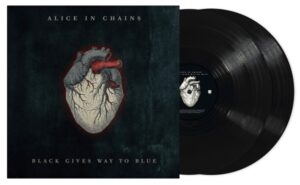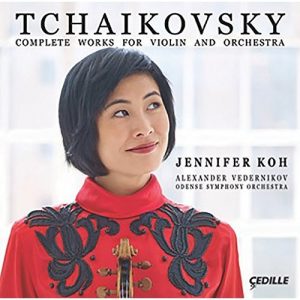High Definition Tape Transfers continues on its roll of great releases. Just recently I wrote about HDTT's superb reissue of Art Pepper Meets the Rhythm Section (HERE). Now we have the famous Fritz Reiner recording of Bartok's Concerto for Orchestra, and The Weavers Reunion At Carnegie Hall, and Ella and Basie!, and much more.
Bartók Concerto For Orchestra - Fritz Reiner Chicago Symphony Orchestra. HDTT (Redux) 1955 2024 (DSD256, DXD) HERE
If you have loved this performance over the years, as I have, then don't hesitate—get this Redux reissue from HDTT. Transferred from an excellent tape copy of the production master tape, this Redux reissue has all the clarity and transparency I've been hoping to find since my transition to digital files only listening. We finally have a release in digital that rivals my memory of the excellent vinyl I once had. In a number of ways, it is likely superior in all those ways that are special about 15ips analog tape. I compared this to my copies of the earlier HDTT release (which is very good) and to the SACD. This new Redux release simply has more life, higher resolution, sharper and more well defined transients, coupled with an overall transparency that those other two reissues lack. The SACD (as a DSD64 file) is disappointingly soft and lacking in immediacy and transient snap when compared to both the earlier HDTT release and to this even better Redux release. This Redux release is simply outstanding!
My only regret is that we no longer having the excellent Richard Strauss Suite from Le bourgeois gentilehomme that accompanied the first release from HDTT. Hopefully HDTT will be able to release that separately once again for those who don't have the original release.
Postscript: Much of the music released by HDTT is from the mainstream catalog and is well known, as in the case of this classic recording. Accordingly, I've largely discontinued writing much in the way of "background" information because there is no need to repeat what you already know. In this case, the HDTT website has a nice, concise summary of the history of this work. If I am wrong in this, please let me know and I can return to expanding more about the music, the composer, or the performance in future articles. After all, we all had to start somewhere in our musical journeys.
Rimsky-Korsakov Music - Ernest Ansermet, L'Orchestre De La Suisse Romande. HDTT 1956 2024 (DSD256, DXD) HERE
Ah, old friends are being returned to the catalog in far superior sound quality. HDTT continues to bring classic recordings in sound quality that is simply "to die for." In this 1956 Decca recording, Ansermet just nails the timing and emotional content inherent in these Rimsky-Korsakov tidbits. Where drama unfolds, Ansermet inexorably draws it forth. And when wit and charm is the game, he and the members of his orchestra (L'Orchestre De La Suisse Romande) are all in.
Transferred from an original Decca Wide Band Pressing. this is another example of the excellent sound quality Bob Witrak is achieving in this ongoing Vinyl Record Restoration Series (earlier article about this series, HERE). If I'd not been told, I could never have told you this was a transfer from an LP. It is utterly quiet, clean and highly resolved while retaining the virtues of warmth, tonality and immense naturalness for which these original Decca LPs are highly prized. And the sound of the orchestra epitomizes the imaging and soundstage which was the hallmark of these early Decca minimally miked recordings. Where the RCA Living Stereo recording of the Bartok Concerto for Orchestra in Orchestra Hall (above) is spacious, broad and somewhat diffuse (while still having plenty of detail), this Decca recording is focused, precise and deep. Moving from one to the other, I did an aural double-take, the hall sound was so strikingly different. No, one is not better than the other. But they are different. Much of this comes from the difference between Chicago's Orchestra Hall with its wide and somewhat shallow stage versus Geneva's Victoria Hall (more narrow and deep). The different recording processes set up each for success.
Ella and Basie! Ella Fitzgerald, Count Basie and His Orchestra. HDTT 1963 2024 (Pure DSD256) HERE
This release is just a delight. Supremely transparent, dynamic and resolving. The detail is great, the transients are sharp and tremendously well resolved. I've loved this album for decades, and I don't recall it ever sounding any better than in this transfer. Just out of curiosity I pulled out the Verve CD of this album and played it. Oh my, what a contrast! With the HDTT release Ella's voice sounds fleshed out and natural. No longer that digital edge that always aggravated me with the CD. No surprise here. Many thanks to HDTT for this lovely release!
Schubert Unfinished Symphony, Music from Rosamunde, Stanislaw Skrowaczewski, Minneapolis Symphony Orchestra. HDTT 1961 2024 (DSD256, DXD). HERE
There has always been something a bit magical for me about Skrowaczewski's performances of Schubert's music from "Rosamunde." In contrast to his approach to the "Unfinished Symphony" (nothing flashy, very deliberate), he plays Rosamunde with energy, wit and a good deal of panache. But the huge value here is the wonderful Mercury Living Presence orchestral sound. As with the best MLP recordings, here we have a full orchestra so well captured and presented that the verisimilitude never fails to satisfy my need for good sonics. This new HDTT transfer from a 2-track, 15ips tape is most satisfying. Well done!
The Dave Brubeck Quartet At Carnegie Hall. HDTT 1963 2024 (Pure DSD256). HERE
It's 1963 and we're sitting with the audience at Carnegie Hall! During the applause, the audience is all around you. And the band is bursting with energy.
This Pure DSD256 transfer from a 15ips tape is as alive and "you are there" sounding as any jazz recording in my collection. No, the soundstage is not quite as good as some other recordings, there are definitely multiple microphones. But, the overall sense of this recording is that it is live and we are sitting right along with the audience. I'm loving it.
Some critics say that this is not the best live recording of the quartet, but, for me, it's got to be right up there. I don't have another copy of this recording to compare this reissue from HDTT. But, this reissue has all the earmarks of HDTT's best work. It is clean, detailed, dynamic and very quiet (as in little to no tape noise). Since this is a straight to DSD256 transfer with no PCM processing, it is clear that HDTT was, once again, able to get access to a very high quality analog tape from which this transfer was made.
The Pink Panther, music from the film score composed and conducted by Henry Mancini. HDTT 1963 2024 (DSD256, DXD) HERE
From the opening piano, drum and triangle notes, this new reissue by HDTT just sounds spookily real. When the saxophone takes over, all is just luscious. I don't have another digital release to compare to, only my 24/192 rip of the LP which doesn't begin to match up to the sound of this 2-track tape transfer. The sound here is open, clean and dynamic. Transients are sharp, well-defined, and with great leading edge snap. All in all, a delightful way to revisit this album and enjoy it as a completely fresh listening experience.
The Weavers Reunion At Carnegie Hall. HDTT 1963, 2024 (DSD256, DXD) HERE
This iconic album has been a mainstay in many audiophiles' LP collections ever since its release in 1963. I've owned any number of the LP reissues. But, never have I enjoyed this album more than when recently listening to it in this new transfer to DSD256/DXD from a 2-track tape. If you have the Analogue Production LP reissue and listen to vinyl, you don't need to replace it—it's wonderful. But if you have any other of the various reissues (or even the original LP), this new high resolution digital reissue will take you deeper into this wonderful live performance.
If you don't know this album you may wonder why it has been so highly valued by audiophiles over the years. Simple. The album manages to capture that elusive sense of live performers that is just marvelous to experience in your listening room. The soundstage is almost perfectly captured. The voices and instruments sound immensely realistic and present. This new reissue captures this. Highly recommended!
Sibelius Symphony No. 5, Pohjola's Daughter, Sir John Barbirolli, The Hallé Orchestra. HDTT 1959, 2024 (DSD256, DXD) HERE
I really enjoy Barbirolli's Sibelius performances. Anytime, any place, with any orchestra. Barbirolli just captures the best from Sibelius, imo. This is not the well known EMI performance of 1966 (released 1967), it is his earlier recording with Pye Recordings from 1959. But the performance has all the characteristics of Barbirolli's approach to Sibelius. As RobertJTh commented in a Talk Classical post, "Barbirolli is unsurpassed in this repertoire. Not perfect, and if it's technical perfection you want, look somewhere else. But Barbirolli's Sibelius has soul, everything sings, flows, feels warm and natural."
The ultimate sound quality of this transfer from LP is perhaps not the best of HDTT's Vinyl Record Restoration series, but it is nonetheless very enjoyable and very listenable with reasonably good definition and nice impact from brass and percussion. (The Pohjola's Daughter is perhaps better sonically than the Fifth.) I hear no distortion, no vinyl artifacts and no groove noise. It is another very satisfying VRR release of some great music that I am delighted to have now in my digital collection. Hurrah for Barbirolli! And thank you, HDTT.
For a real treat, get from HDTT the Barbirolli/RPO performance of Sibelius' Symphony No. 2. (HERE) This is the famous Kenneth Wilkinson and Charles Gerhardt recording made for Readers Digest and reissued some years ago by Chesky Records on both LP and CD. Such a "top of the pile" recording as was ever made, and in the best sonics ever in the transfer made by HDTT.
Little Band Big Jazz, Conte Candoli All Stars. HDTT 1960 2024 (DSD256, DXD) HERE
If you enjoy a small band sound in jazz, this 1960 Crown Records recording led by Conte Candoli on trumpet, with Vince Guaraldi on piano, and supported on bass by Leroy Vinnegar, drums by Stan Levey, and tenor saxophone by Buddy Collette may be right up your alley. The sound quality is excellent in this transfer from a 15ips 2-track tape. It has a very direct, very clean, not futzed with sound quality—just the mikes to tape. It is as "you are there" realistic as recordings get. And even though mikes are one-per-instrument, there is good lateral stereo presentation. And the instrumental timbre sounds spot on.
The entire album is a nice collection of vintage West Coast jazz. It includes pianist/composer Vince Guaraldi's only recording (that I know about) of his composition "Macedonia," an early work that stands among his best. It is certainly a high point on this album.
According to Wikipedia, following the success of Guaraldi's album, Jazz Impressions of Black Orpheus (1962) on Fantasy Records, Crown reissued this album as "Vince Guaraldi and the Conte Candoli All-Stars" in 1964 to capitalize on the recognition.
Barney Kessel Plus Big Band - Bossa Nova. HDTT 1961 2024 (Pure DSD256) HERE
Okay, this album is just plain fun. Nothing deep here, musically not particularly innovative. But does it move? Oh, yes. Just go with it. If you're not fond of electric guitars or electric organ, this may not be the right album for you. But it is a unique experience.
As the HDTT web page notes say, "This Bossa Nova title may seem deceiving..." It is indeed. Instead, what we get is a blend of early Rockabilly with a big band influence. And it's a trip and a half to hear. I can't stop grinning on some of the cuts.
Dynamic, brassy, bold—the 15ips 2-track tape from which this is transferred in Pure DSD256 (with no PCM processing) is as direct, immediate, and alive as it gets. I almost didn't review this because the music is so far out of my mainstream, but I'm glad I stepped in for a listen. It is just fun. (Did I say that already?)
If you're wondering whether to make the investment, try listening to their rendition of "It ain't necessarily so" in the preview sample tracks. Having only the first 30-seconds doesn't do justice to the full cut, but you'll get a sense for it. The trade-off from instrument to instrument is just clever and a complete hoot to hear.
Mozart Piano Concertos No. 26 & 27, Robert Casadesus, George Szell, The Columbia Symphony Orchestra. HDTT 1962 2024 (DSD256, DXD) HERE
For many of my generation, the Mozart Concertos performed by Robert Casadesus and George Szell are our "imprint" recordings. While I've found many others in the decades since that I enjoy (and perhaps prefer given my predilection for historically informed performances with period instruments), these still hold a special place in my heart. I love the non-sentimental approach Casadesus takes in these performances. The biggest problem in the past was the Columbia LP sonics—just never very good given Szell's demand to turn up the treble in post-processing. But here we have a transfer from a 15ips 2-track tape that has excellent and far more natural frequency balance. It also presents a stereo image that is very satisfying, with no unnatural highlighting. Hearing these great performances again today in excellent sonics is an unalloyed joy.
For a classic account of these concertos and an easy entry into Mozart's music, these performances are highly recommended. And for excellent sonics, you'll not find a release of these performances that will sound as good as these new transfers from HDTT. Recommended!




